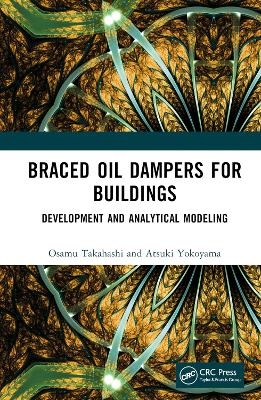
Braced Oil Dampers for Buildings
CRC Press (Verlag)
978-1-032-26863-7 (ISBN)
The high damping force of oil damper vibration control systems in buildings
offers relative safety during earthquakes and at a low environmental
cost. The oil damper is connected using braces in series and is installed with
pins to the building structure, which minimizes the impact on the building
structure and allows installation and removal with ease.
This is the first book detailing experimental work and cases of the use of
oil dampers in buildings. It shows their effectiveness by detailing the testing
and analysis of buildings with them placed at braced positions, exposed to
small amplitude vibration, and without them.
• The only comprehensive presentation of oil damper vibration control
• Covers analysis and design, with case studies and details of testing
and experimental results
The book is organized systematically to suit students and junior professionals
in structural design as well as more specialist engineers. An additional
Python code sample is available online for learning the behaviors of oil
dampers (Jupyter Notebook environment required).
Osamu Takahashi is a professor at Tokyo University of Science, founder
of Science Kozo Inc., and an advisor to the New International Structural
Design & Engineering Challenge Association, in Japan.
Atsuki Yokoyama works in the Research and Development Department
of Sanwa Tekki Corporation and has a PhD in Engineering from Tokyo
University of Science.
Osamu Takahashi is a Professor at Tokyo University of Science, founder of Science Kozo Inc., and an advisor to the New International Structural design & engineering Challenge Association, in Japan. Atsuki Yokoyama works in the Research and Development department of Sanwa Tekki Corporation and has a PhD in Engineering from Tokyo University of Science.
Part 1. Development and Analytical Modeling of Braced Oil Dampers for Buildings. 1. Introduction. 2. Development of an oil damper for buildings considering damping characteristics and various dependencies. 3. Analytical model of a single building oil damper. 4. Damping characteristics and analytical model of brace-type oil damper. 5. Evaluation of vibration damping performance of actual building using brace-type oil damper and confirmation experiment. 6. Analytical model and verification of building oil damper under small amplitude. 7. Conclusion to Part 1. Appendix 1. Example of implementation in a high-rise building (office building, Atago 2-chome Project (tentative name)). Appendix 2. Example of implementation in a reinforced building (Aizu-Tajima Joint Government Building, Fukushima Prefecture). Part 2. Development of the oil damper stiffness for architectural vibration control and experimental research on structural characterization. 8. Preface. 9. Configuration and Characteristics of Stiffness-Supported Oil Dampers. 10. Analysis Model for Stiffness-Supported Oil Dampers. 11. Examination Involving Time History Response Analysis Based On Single Degree-of-Freedom Model. 12. Converted Is and q Values of Building Incorporating Stiffness-Supported Oil Dampers. 13. Conclusion to Part 2. Appendix 3. The Low-Loss Viscoelastic Material's Dependence on Temperature and Vibration Frequency.
| Erscheinungsdatum | 07.09.2023 |
|---|---|
| Zusatzinfo | 77 Tables, black and white; 174 Line drawings, black and white; 13 Halftones, black and white; 187 Illustrations, black and white |
| Verlagsort | London |
| Sprache | englisch |
| Maße | 156 x 234 mm |
| Gewicht | 494 g |
| Themenwelt | Naturwissenschaften ► Geowissenschaften ► Geophysik |
| Technik ► Bauwesen | |
| Technik ► Umwelttechnik / Biotechnologie | |
| ISBN-10 | 1-032-26863-8 / 1032268638 |
| ISBN-13 | 978-1-032-26863-7 / 9781032268637 |
| Zustand | Neuware |
| Informationen gemäß Produktsicherheitsverordnung (GPSR) | |
| Haben Sie eine Frage zum Produkt? |
aus dem Bereich


